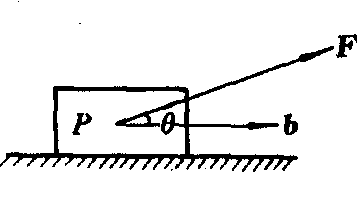向量的数量积xiangliang de shuliangji
记为向量a,b的夹角.数量|a||b|cos称为a与b的数量积,记为a·b或ab,数量积也称为内积或点积.求数量积的过程叫点乘. 〈a°·b°〉 =arccos〈a°,b°〉
向量a自身的数量积记为a2,即a·a=a2·0与任何向量的数量积都是零,即0·a=0.
物理力学中,重物P在力F的作用下位移b,力F所作的功W= |F||b|cosθ(θ为F与b的夹角),就是向量F与b的数量积.
由数量积的定义可以得到以下推论:
❶a·b>0⇔a与b都是非零向量,并且〈a,b〉<π/2.
❷a·b<0⇔a与b都是非零向量,并且>π/2.
❸a·b=0⇔或者a与b中至少有一个是0或者a⊥b.当a与b中至少有一个是0时,也可以看作a⊥b.从而a·b=0⇔a⊥b.
❹用数量积可以表示向量的模:
a2=|a||a|cosθ=|a|2,从而|a|= (注
(注 ≠a).
≠a).
❺用数量积表示向量的夹角.当a,b都是非零向量时,
特别地,若a,b都是单位向量,则
数量积的几何意义:两个向量数量积的绝对值等于一个向量的模与另一个向量在此向量上的正投影向量的模之乘积.当两个向量的夹角为锐角时,数量积为正.当两个向量的夹角为钝角时,数量积为负.